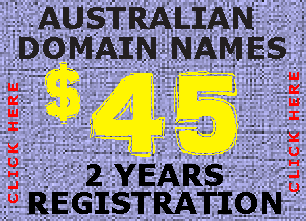Victoria has a parliamentary form of government based on the Westminster System. Legislative power resides in the Parliament consisting of the Governor (the representative of the Queen), the executive (the Government), and two legislative chambers. The Parliament of Victoria consists of the lower house Legislative Assembly, the upper house Legislative Council and the Queen of Australia. Eighty-eight members of the Legislative Assembly are elected to four-year terms from single-member electorates.
In November 2006, the Victorian Legislative Council elections were held under a new multi-proportional representation system. The State of Victoria was divided into eight electorates with each electorate represented by five representatives elected by Single Transferable Vote proportional representation. The total number of upper house members was reduced from 44 to 40 and their term of office is now the same as the lower house members, four years. Elections for the Victorian Parliament are now fixed and occur in November every four years. Prior to the 2006 election, the Legislative Council consisted of 44 members elected to eight-year terms from 22 two-member electorates.
The Premier of Victoria is the leader of the political party or coalition with the most seats in the Legislative Assembly. The Premier is the public face of government and, with cabinet, sets the legislative and political agenda. Cabinet consists of representatives elected to either house of parliament. It is responsible for managing areas of government that are not exclusively the Commonwealth’s, by the Australian Constitution, such as education, health and law enforcement. The current Premier of Victoria is Ted Baillieu.
Executive authority is vested in the Governor of Victoria who represents and is appointed by Queen Elizabeth II. The post is usually filled by a retired prominent Victorian. The governor acts on the advice of the premier and cabinet. The current Governor of Victoria is Alex Chernov.
Victoria has a written constitution. Enacted in 1975, but based on the 1855 colonial constitution[dead link], it establishes the parliament as the state’s law-making body for matters coming under state responsibility. The Victorian Constitution can be amended by the parliament of Victoria. Under new provisions to be enacted, changes to the Victorian Constitution will be subjected to a plebiscite of votes, voting in a referendum.
Premier Ted Baillieu leads a Liberal/National Coalition that won the November 2010 Victorian state election.The centre-left Australian Labor Party (ALP), the centre-right Liberal Party of Australia and the rural-based National Party of Australia are Victoria’s major political parties. Traditionally, Labor is strongest in Melbourne’s inner, working class and western and northern suburbs, Morwell, Ballarat, Bendigo and Geelong. The Liberals’ main support lies in Melbourne’s more affluent eastern and outer suburbs, and some rural and regional centres. The Nationals are strongest in Victoria’s North Western and Eastern rural regional areas.
Victorian voters elect 49 representatives to the Parliament of Australia, including 37 members of the House of Representatives and 12 members of the Senate. Since 2010, the ALP has held 22 Victorian house seats, the Liberals 12, the Nationals two and the Greens one. As of 1 July 2008, the Liberals have held six senate seats, the ALP five and the Family First Party one.
Victoria is incorporated into 79 municipalities for the purposes of local government, including 39 shires, 32 cities, seven rural cities and one borough. Shire and city councils are responsible for functions delegated by the Victorian parliament, such as city planning, road infrastructure and waste management. Council revenue comes mostly from property taxes and government grants.
Source: Victorian Parliamentary Library, Department of Victorian Communities, Australian Electoral Commission
Content from this page is drawn from Here.

